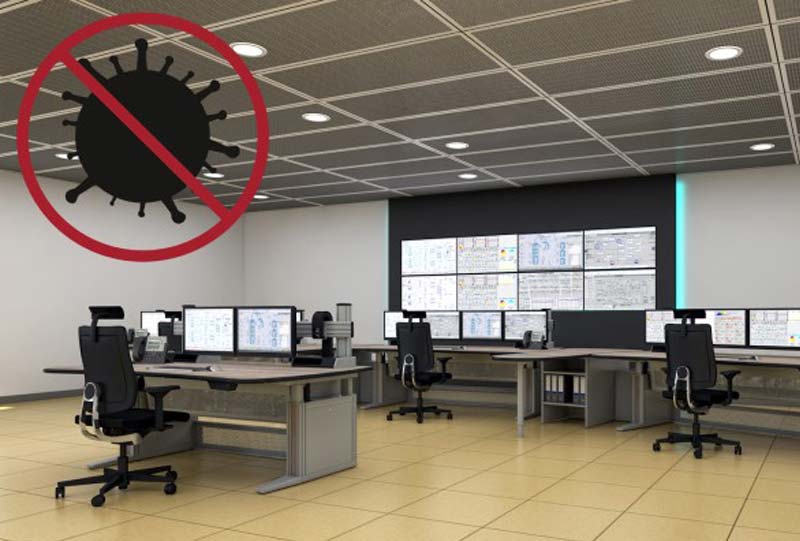In recent months, an inflationary marketing of disinfection and hygiene products has increasingly emerged. For the most part also understandable, as Covid-19 is not yet overcome and reproduction numbers may rise again in the short term. As with many trends, however, attempts are being made here to exploit the topic of hygiene commercially. B2C sales platforms are full of (non-)useful gadgets that promise virus-free interaction in everyday situations. Door opening aids, disinfection air fresheners in cars, projected keyboards and many other more or less serious gadgets. But isn’t regular hand washing in the office and disinfection of frequently used objects and surfaces a basic requirement anyway…even without Covid-19?
In the context of a modern control room, it is clear that guidelines and standards already exist to regulate the minimum requirements for space per employee and the materials to be used. The international standard ISO 11064 (Ergonomic design of control centres) refers to a minimum usable area per workplace of 9m². Also, according to DGUV 215-410 (German Association for Accident Insurance), traffic routes at the workplace must be sufficiently large, depending on the number of people in the room. Often, however, the planning of a control room is done “from outside to inside”, i.e. based on an existing infrastructure a certain number of workstations must be accommodated. This leads to compromises, which often do not have a favourable effect on distances and routes.
It should also be possible to clean surfaces as simply and thoroughly as possible. Permanently manned dispatchers’ workplaces in control centres are exposed to three times the load of conventional 8-hour office workplaces due to droplet infection. Although there are no special requirements, such as dirty joints for medical equipment, it goes without saying that openings or areas at the workplace that are difficult to clean should be kept to a minimum.
Partition walls between users as visual or acoustic protection have been used in practice for a long time. Now also available in the Corona version made of acrylic glass. Existing products are marketed in line with the new trend, but this is not a disruptive innovation.
As a sensible measure within the framework of a hygiene concept, each user should be provided with their own workplace utensils. The personal keyboard and mouse, as well as pens and headset, should not only be available because of the Corona hygiene phenomenon. The Knürr® Dicon product from Vertiv provides a configurable and easily accessible USB port solution. This makes plugging in your own input devices as simple and fast as possible during shift changes. Tabletops with antibacterial surfaces are also used in this context. The nano-technology used here is not only self-healing (scratches can be ironed out), but is also easy to clean in addition to its pleasant feel.
It remains to be seen whether there will be lasting changes in the design of control rooms and workstations due to Covid-19. However, a reasonable hygiene concept with personal input devices, easy to clean surfaces and sufficient minimum distances should be considered a basic requirement. Employee health protection, virtual collaboration and emergency shift models, perhaps current requirements put more emphasis on these and similar topics and receive special attention in the planning and implementation of safety-critical work areas.
Author: Tim Holzapfel






